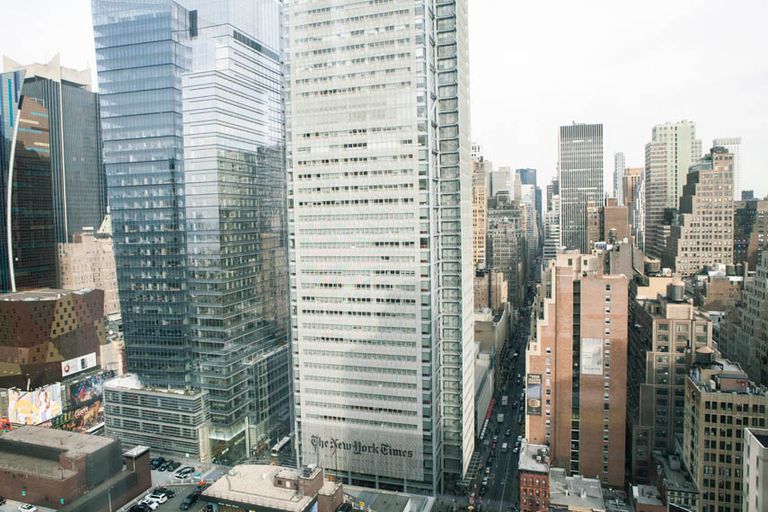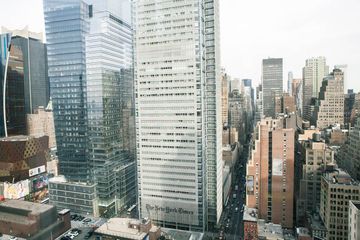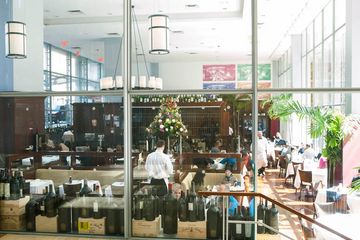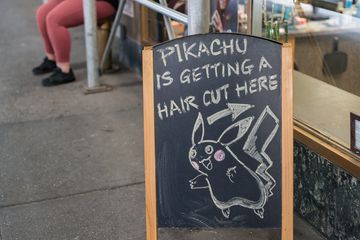
The staff that provides us with all the news that's fit to print resides in this incredible structure that has entrances on both 40th and 41st Streets. Also referred to as the Times Tower, the building was constructed by the New York Times Company in partnership with others to house their flagship newspaper and related ventures. Upon its completion in 2007, it became the fourth tallest building in New York City, tied for the honor with the nearby Chrysler building and clocking in at nearly a fifth of a mile high (1,046 feet). Standing as it does across the way from a principal entrance to Port Authority, the Times building serves to welcome city newcomers with an ode to one of New York's most prominent and eminent institutions.
There are numerous art installations throughout the building, but it is only in the lobby that the public is invited to view their changing exhibits. "Movable Type," is the current show. It is a display of words culled from articles written throughout the paper's history, as well as real-time input from users of its website, and splashed across a series of screens. The snippets, so decontextualized, ring with mystery, emerging from their historical roots to bare themselves self-contained and spur the imagination. It is data as art, news as poetry, and well worth a look.





